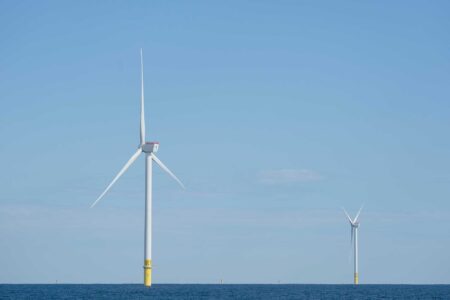Average rate on a 30-year mortgage eases again

A for sale sign outside a residence in Niles, Ill. (AP Photo/Nam Y. Huh, file)
The average rate on a 30-year U.S. mortgage eased to where it was three weeks ago, modest relief for prospective homebuyers challenged by rising home prices and stubbornly high borrowing costs.
The long-term rate slipped to 6.72% from 6.74% last week, mortgage buyer Freddie Mac said Thursday. A year ago, the rate averaged 6.73%.
Borrowing costs on 15-year fixed-rate mortgages, popular with homeowners refinancing their home loans, also eased. The average rate dropped to 5.85% from 5.87% last week. A year ago, it was 5.99%, Freddie Mac said.
Elevated mortgage rates continue to weigh on the U.S. housing market, which has been in a sales slump going back to 2022, when rates started to climb from the rock-bottom lows they reached during the pandemic.
Mortgage rates are influenced by several factors, from the Federal Reserve’s interest rate policy decisions to bond market investors’ expectations for the economy and inflation.
The main barometer is the 10-year Treasury yield, which lenders use as a guide to pricing home loans. The yield was at 4.34% at midday Thursday, down from 4.37% late Wednesday.
Yields moved higher most of July as traders bet that the Fed would keep its key short-term interest rate unchanged at its meeting this month.
On Wednesday, the central bank’s policymaking committee voted to hold its main interest rate steady. And Fed Chair Jerome Powell pushed back on expectations that the Fed could cut rates at its next meeting in September, pointing to how inflation remains above the Fed’s 2% target, while the job market still looks to be “in balance.”
A cut in rates would give the job market and overall economy a boost, but it could also fuel inflation just as the Trump administration’s tariffs risk raising prices for U.S. consumers.
“If a September rate cut starts to be more likely, it is possible that we could see mortgage rates edge downward at the end of the summer, similar to what we saw last year at this time,” said Lisa Sturtevant, chief economist at Bright MLS. “If inflation expectations continue to be high, mortgage rates could also remain higher.”
The average rate on a 30-year mortgage has remained relatively close to its high so far this year of just above 7%, set in mid-January. The 30-year rate’s low point this year was in early April when it briefly dipped to 6.62%.
Economists generally expect the average rate on a 30-year mortgage to remain above 6% this year. Recent forecasts by Realtor.com and Fannie Mae project the average rate will ease to around 6.4% by the end of this year.
That may not be enough to spur a turnaround in home sales, which remain sluggish so far this year.
New data on contract signings this week suggest home sales could soften further in the near term. A seasonally adjusted index of pending U.S. home sales fell 0.8% in June from the previous month and was down 2.8% from June last year, according to the National Association of Realtors.
There’s usually a month or two lag between a contract signing and when the sale is finalized, which makes pending home sales a bellwether for future completed home sales.
The housing market doldrums are helping to keep the U.S. homeownership rate stuck at around 65%, as of the second quarter, according to the U.S. Census. The homeownership rate is now at its lowest level since 2019, when it was 64.2%. It has averaged 66.3% going back to 2000.
Despite rates easing in recent weeks, mortgage applications fell 3.8% last week from a week earlier to their lowest level since May, according to the Mortgage Bankers Association. Applications were still up 21.8% versus the same period last year.
“There is still plenty of uncertainty surrounding the economy and job market, which is weighing on prospective homebuyers’ decisions,” said Joel Kan, deputy chief economist.





